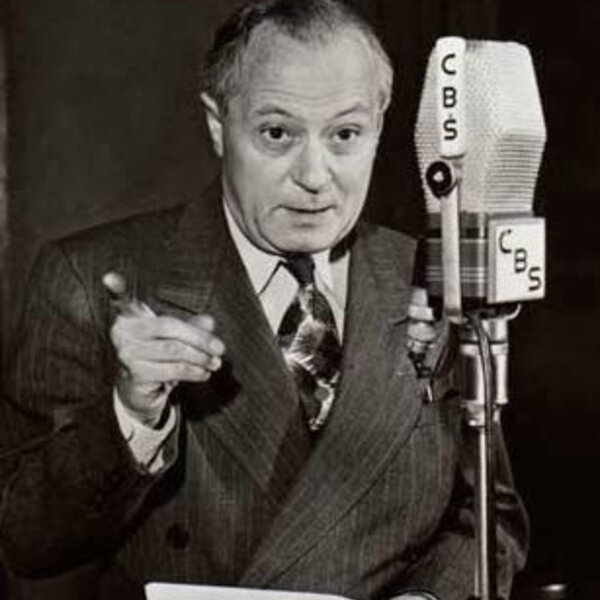Book Covers All 1,693 Episodes of Mr. Keen, Tracer of Lost Persons

In his previous books, author Jim Cox has written about two of radio's most prolific producers (Frank and Anne Hummert's Radio Factory), the last decade of the golden age of radio (Say Goodnight Gracie) and several radio programming genres (Radio Crime Fighters, The Great Radio Audience Participation Shows and The Great Radio Soap Operas).
In his current book, Jim focuses his considerable research and writing talents on a single series that was one of his favorites when he was growing up: Mr. Keen, Tracer of Lost Persons. As readers have come to expect from any Jim Cox effort, he has intensively and thoroughly researched his chosen subject, uncovered more new information and written a highly entertaining and enlightening volume on radio's longest-running detective series.
The book starts with Chronology: A Mr. Keen Almanac, which is a convenient timeline for the series providing information in an outline format, including dates, days and times of broadcasts; primary cast and crew; networks; and sponsors.
In the chapter The Aural Sleuth: Murder and Mayhem on the Air, Jim discusses the popularity and significance of the private investigator during the golden age of radio.
The origins and evolution of the Mr. Keen character are examined in the next three sections. The Origins of a Supersleuth covers the literary lineage of Keen in the writings of Robert W. Chambers and how Mr. Keen was adapted for radio by Frank and Anne Hummert. In Chambers' writings the kindly old investigator was a matchmaker for the wealthy. The next two chapters describe how Mr. Keen evolved over time on the radio: starting as the Tracer of Lost Persons in 1937 and by the mid-1940s transforming into a more intense, relentless chaser of murderers.
The dictates of the Hummerts often led to unintentionally humorous situations and dialogue on the series and are mentioned in the chapter Funny Business. These gaffes lead to satires on the series by the comedy of Bob and Ray: Mr. Trace Keener Than Most Persons and Mr. Treat, Chaser of Lost Persons. These Bob and Ray sketches of the series are also addressed.
Many entertaining anecdotes about cast and crew members are included in the chapter Hired Guns. There are also numerous biographical sketches of the writers, lead actors, directors, announcers, sound effect artists and musicians. The advertisers of Mr. Keen are discussed in Sold on Radio.
Collectors will be intrigued by the radio episode guide for the 1,693 installments of Mr. Keen. There is plenty of factual information: the broadcast dates and times, episode numbers and titles, episode plot summaries and so forth, but there is so much more! Jim mentioned at the beginning of this section that he attempted "to craft an expansive, engaging and useful episode guide." I can tell you that he has definitely succeeded. As I read Jim's episode summaries from the years of the thrice-weekly serial format, I found myself following Mr. Keen and Mike Clancy. Not only could I see them in my mind's eye as they conducted their investigations, I could also hear them.
Jim Cox has provided radio program enthusiasts with several of the finest works on various aspects of our hobby. With the publication Mr. Keen, Tracer of Lost Persons: A Complete History and Episode Log of Radio's Most Durable Detective, he has added another superlative volume to the body of old-time radio literature.
Stewart Wright in Return With Us Now, August 2004
Add a Comment
All comments are moderated before publication. These HTML tags are permitted: <p>, <b>, <i>, <a>, and <blockquote>.
Top 10 Articles
- The Marriage of Don Ameche and Honore Prendergast
- The Night Arthur Godfrey Fired a Singer On Live Radio
- Early Radio Announcers Invented Their Profession in the 1920s
- The Mythical Town of East Tincup, Colorado
- The Earliest Radio Shows of the 1920s
- The Great Radio Detectives of the 1950s
- The Home Life of Jack Benny
- Why Vladimir Horowitz Stopped Performing in the 1930s
- Judy Canova: The Queen of Hillbilly Hokum
- Some of the Unsung Heroes of Radio

